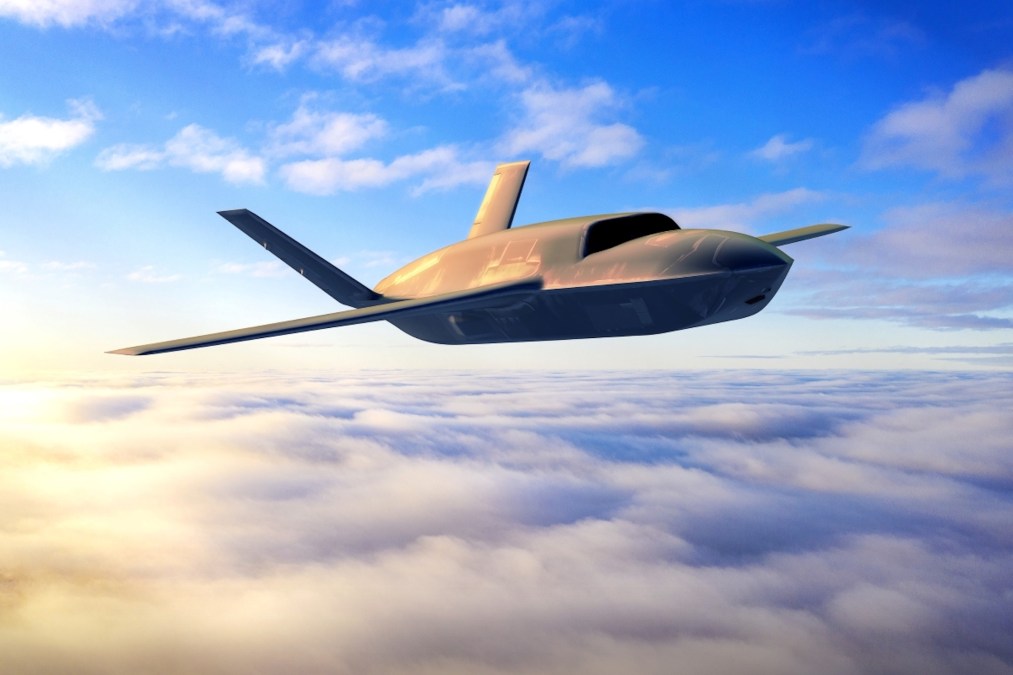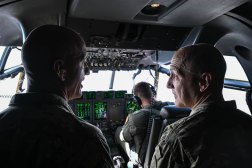Marine Corps in nascent phases of CCA drone development

The Marine Corps is still in the early stages of understanding how collaborative combat aircraft (CCA) will be used by the force, with current efforts focused on experimenting with some platforms and ensuring interoperability with the other services.
In 2023, the Marine Corps entered a tri-service agreement with the Air Force and Navy to standardize a handful of components of their respective CCA drones — envisioned as robotic wingmen that fly alongside and augment the capabilities of manned aircraft. And as the Air Force inches towards making its first production contract and the Navy looks to kick off an analysis of its effort, the Marine Corps isn’t ready to make any programmatic decisions for its own.
“I think we really still need to explore what the future concept of CCA means for the Marine Corps as a whole,” Col. Nathan Marvel, director of the Rapid Capabilities Office and Science and Technology Directorate at the Marine Corps Warfighting Lab (MCWL), said Wednesday during a panel at Modern Day Marine.
He continued: “Is it a loyal wingman? Is it manned-unmanned teaming? How do we use those platforms to maneuver about the battlespace? Are they actually hunting or are they sensing?”
To inform its campaign of learning, the service is gearing up for some demonstrations with both large and small unmanned platforms in partnership with the Office of the Under Secretary of Defense for Research and Engineering at the Pentagon, Marvel said. The focus will be on refining requirements and informing future programmatic decisions, he added.
Overall, the Marine Corps is moving out on a broader effort to modernize its aviation portfolio for 2040 — an effort known as Project EAGLE. The long-term planning framework aims to transform how the service’s aviation platforms support the Marine Air-Ground Task Force in facing emerging threats.
Marvel said the upcoming experiments for its CCA effort will inform Project EAGLE and Marine Corps leadership on how the unmanned aircraft will fit into the service.
Col. Derek Brannon, director of the Cunningham Group within Marine Corps Aviation, highlighted that CCAs can be used in other capacities besides just supporting tactical fifth-generation aircraft. For example, the drones could be leveraged for “Red Air” training, posing as aggressors in combat scenarios, he said.
“We’ve got a good idea in the direction that we want to go,” Brannon said during the panel. “We just have to take a look at that and then move forward — everything from the platform to the individual pilot that may or may not have to control it in the cockpit.”
As part of the collaboration agreement on CCAs, the Air Force, Navy and Marine Corps have agreed to a common aircraft architecture, communications links, autonomy architecture and ground-control segments. The goal is to give each service the flexibility to pursue drones that meet the unique requirements for their respective missions, while also ensuring that they are interoperable with each other — possibly allowing for one service to control another’s CCA.
Having made CCAs one of its top modernization priorities, the Air Force is significantly further along in the development process than the sea services. On April 24, the service announced it had chosen Anduril and General Atomics to move into the next phase of its program, during which the two companies will create detailed designs, and manufacture and conduct flight tests of drone prototypes.
The Air Force wants to make a production decision for CCAs in fiscal 2026 and field the drones before the end of the decade.
At the same time, the Navy has begun forming top-level requirements and an acquisition strategy for its CCA program. The service plans to begin an analysis for the effort in fiscal 2025 that will focus on studying the necessary payloads, mission systems and sensors that will be equipped on the drones.
As the Marine Corps continues to refine its own vision for CCAs, Deputy Commandant for Aviation Lt. Gen. Bradford Gering emphasized that platforms will be in alignment with the Air Force and Navy.
“Whether the road we go looks different or looks the same, that’s to be determined,” Gering said at the panel. “But bottom line — they’re going to be interoperable and complimentary.”






